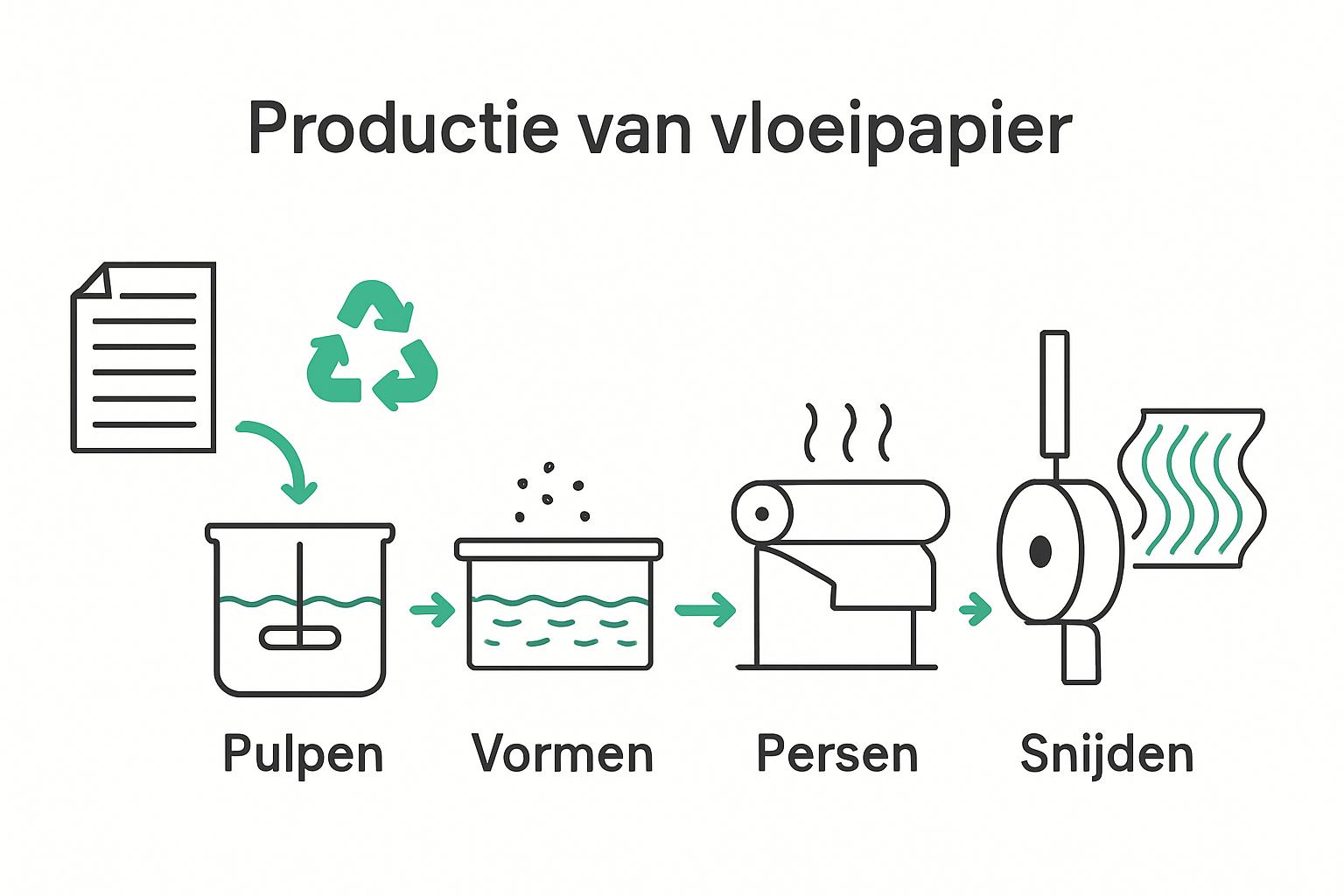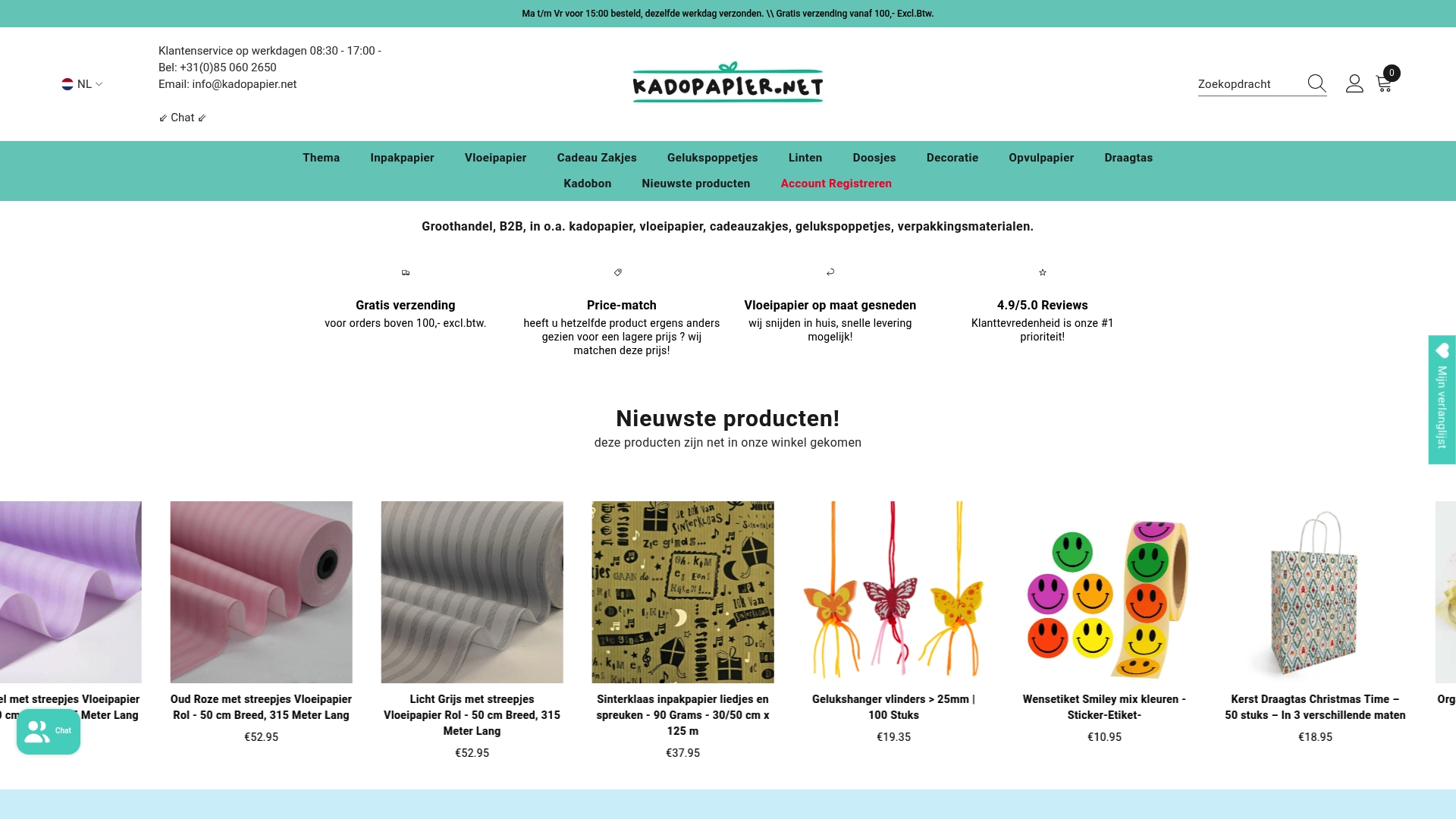Tissue Paper as Filler: Understand and Use It Wisely

At first glance, tissue paper might seem like just thin, soft paper used as stuffing or for wrapping gifts. But surprise! Over 3.9 million tons of recycled paper are used worldwide annually to produce tissue paper. What's striking is that the success of tissue paper lies not in its strength, but rather in the combination of extreme lightness, flexibility, and subtle protection that you rarely find anywhere else.
Table of contents
- What is tissue paper and how is it produced?
- Why is tissue paper an effective filler?
- How does tissue paper provide protection and presentation?
- What are the applications of tissue paper in different industries?
- What are the sustainability aspects of using tissue paper as a filler?
Quick Summary
| Takeaway | Explanation |
|---|---|
| Tissue paper is light and flexible | These properties ensure that fragile objects remain well protected during transport or storage. |
| Fully recyclable and environmentally friendly | Tissue paper reduces the impact on the environment by using renewable raw materials and recycling options. |
| Excellent protection against shocks | The soft structure absorbs shocks, preventing damage to sensitive items. |
| Enhances the aesthetics of packaging | The diversity of colours and textures makes tissue paper ideal for luxurious and attractive presentations. |
| Versatile in applications | Tissue paper is used in various sectors such as retail, food and electronics for packaging and art. |
What is tissue paper and how is it produced?
Tissue paper is a special type of soft, thin, and flexible paper used for many decorative and protective purposes. It is distinguished by its light weight, transparency, and silky texture. Producing tissue paper involves a careful process that determines the quality and properties of the final product.
The origin and composition of tissue paper
Tissue paper is made from cellulose pulp , usually obtained from wood chips or recycled paper. According to research by the American Forest & Paper Association, modern paper manufacturers use approximately 3.9 million tons of recycled paper in their production processes. The production process begins with converting wood chips into a liquid pulp through chemical or mechanical pulping methods.
The production process of tissue paper
Making tissue paper is a precision process that involves several steps:

- Pulp is made by mixing wood fiber with water
- The pulp is sprayed onto a moving sieve, where water is gradually removed
- Cellulose fibers bond together as the paper moves through heated rollers
- The final product is dried and cut to the desired dimensions
The quality of tissue paper is determined by factors such as fiber composition, pulp processing and drying process.
Here is a step-by-step overview of the tissue paper production process to help clarify each phase and its function:
| Step | Description |
|---|---|
| 1 | Cellulose pulp is created by mixing wood fiber (from woodchips or recycled paper) with water |
| 2 | The pulp is sprayed onto a moving screen, allowing gradual removal of water |
| 3 | Cellulose fibers bond as the paper moves through heated rollers |
| 4 | The finished tissue paper is dried |
| 5 | The dried tissue is cut into desired dimensions for further use |
This table outlines the entire manufacturing sequence for tissue paper, making the process easy to follow at a glance.
The result is a light, soft material that is perfect for numerous applications such as packaging, decoration and protection of delicate objects.
Why is tissue paper an effective filler?
Tissue paper is an excellent choice for protecting and packaging fragile items. Its unique properties make it a superior material for cushioning in a variety of applications, from delicate gift wrapping to professional shipping processes.
Protective properties of tissue paper
The effectiveness of tissue paper as a cushioning material is determined by its specific physical properties. Soft and flexible, it prevents scratches and damage to sensitive surfaces. Its lightweight structure absorbs shock and vibration, providing optimal protection for fragile items. Research published in ACS Sustainable Chemistry & Engineering confirms the potential of paper products in protective packaging solutions.
Benefits of tissue paper as a filler
Tissue paper distinguishes itself by several crucial properties:
- Lightweight, so it doesn't unnecessarily increase shipping costs
- Fully recyclable and environmentally friendly
- Available in various thicknesses and colors for specific needs
- Easily forms around irregularly shaped objects
Moreover, tissue paper is cost-effective and versatile. Whether you want to protect delicate jewelry, electronic devices, or fragile decorations, tissue paper offers a reliable solution. Discover more about creative uses for tissue paper to utilize the full potential of this versatile material.

How does tissue paper provide protection and presentation?
Tissue paper is not only a practical protective measure but also a sophisticated presentation tool that enhances the aesthetics and security of items. It combines functionality with a visually appealing packaging experience that offers both protection and embellishment.
Protective properties of tissue paper
In terms of protection, tissue paper acts as an advanced buffer. Its soft fiber structure prevents scratches and abrasions on delicate surfaces. According to research published in scientific journals, specialized paper coatings can further enhance these protective properties by adding water-repellent and antibacterial properties.
Presentation and aesthetic added value
Tissue paper distinguishes itself through its versatile presentation possibilities:
- Available in countless colors for perfect matching
- Creates a layer of elegance around the wrapped product
- Provides a luxurious and professional look
- Suitable for both business and personal packaging
Moreover, tissue paper provides a subtle decorative layer that enhances the overall visual experience. Discover the art of stylish wrapping to utilize the full decorative potential of tissue paper. Whether it's delicate jewelry, electronics, or decorative items, tissue paper provides perfectly protected and attractively presented packaging.
What are the applications of tissue paper in different industries?
Tissue paper is a versatile material that has proven its value in countless industries. From packaging to art, from food to electronics, this thin paper plays a crucial role in protection, presentation, and functionality.
Industrial packaging applications
High-performance protection is at the heart of tissue paper in industrial sectors. In the logistics and transportation industries, it's used to protect fragile electronics, precision instruments, and delicate merchandise. According to research by the Technical Association of the Pulp and Paper Industry, specialized paper coatings have been developed to further enhance these protective properties.
Diversity in industry-specific applications
Different industries utilize tissue paper in unique ways:
- Food industry: hygienic interlayers in packaging
- Fashion and retail: decorative and protective packaging
- Electronics sector: antistatic protection for sensitive components
- Arts and crafts: creative materials for decoration and design
The possibilities are virtually endless . Discover more about creative ways to use tissue paper and be inspired by the versatility of this remarkable material.
Below is a summary table comparing applications of tissue paper across different industries, illustrating its versatility and industry-specific benefits:
| Industry | Application | Specific Benefit |
|---|---|---|
| Food | Hygienic layers for packaging | Maintains cleanliness, protects food |
| Fashion & Retail | Decorative and protective packaging | Enhances visual appeal, prevents damage |
| Electronics | Antistatic wrapping for sensitive parts | Provides static protection |
| Logistics/Transport | Cushioning for fragile goods | Absorbs shocks, reduces breakage |
| Arts & Crafts | Creative material for decoration and design | Versatile for artistic projects |
This table helps to visualize the diverse and practical uses of tissue paper in several major sectors.
Whether you are a small business owner or work in a large industrial enterprise, tissue paper offers solutions that are both practical and innovative.
What are the sustainability aspects of using tissue paper as a filler?
Sustainability is a critical consideration in modern packaging solutions, and tissue paper plays a promising role in the transition to environmentally friendly materials. As a renewable and recyclable product, it offers an attractive alternative to less environmentally friendly packaging materials.
Environmentally friendly production processes
Green production techniques make tissue paper a sustainable choice. Research published in ACS Sustainable Chemistry & Engineering shows that modern manufacturers are increasingly using recycled fibers and implementing energy-efficient processes in tissue paper production.
Recycling and reuse options
Tissue paper is distinguished by its sustainable properties:
- Completely biodegradable
- Made from renewable wood fiber resources
- Easy to recycle without complex separation processes
- Reduces plastic waste in the packaging industry
Minimizing environmental impact is a key priority. Discover more about creative reuse methods and learn how tissue paper can contribute to a circular economy. From craft projects to professional packaging, every application contributes to a more sustainable future for packaging materials.
Discover how tissue paper really enhances your packaging
Are you looking for clever ways to safely and stylishly package fragile or valuable products? In the article, you read how tissue paper as a filler not only protects against shocks and scratches but also enhances the presentation of your gift or product. Many people struggle to find reliable and attractive packaging material that meets all their needs. Fortunately, at Kadopapier.net, you'll find a wide range of tissue paper and other packaging materials, so you'll always have the right solution for your project.

Be inspired by the convenience and versatility of custom-made tissue paper for your needs. Browse the full selection at Kadopapier.net and order yours today. From now on, you can give every package the professional and protective look it deserves.
Frequently Asked Questions
What is tissue paper and what is it used for?
Tissue paper is a thin, soft paper often used for packaging, as filler, and for decorative purposes. It provides protection for fragile items and can enhance the aesthetics of packaging.
How is tissue paper produced?
Tissue paper is produced from cellulose pulp, usually made from wood chips or recycled paper, through a process that includes mixing the pulp with water, removing the water, and drying the paper.
What are the benefits of tissue paper as a filler material?
It offers several advantages, such as light weight, full recyclability, shock absorption and perfect conformability around irregularly shaped objects, making it very suitable for packaging fragile items.
Is tissue paper environmentally friendly?
Yes, tissue paper is environmentally friendly. It's biodegradable, made from renewable resources, and easily recycled, making it a sustainable choice in the packaging industry.
